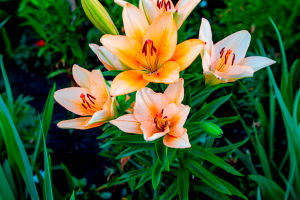While planting bulbs in the dead of winter might seem odd, it can actually be one of the best times to get your garden prepped for the upcoming spring season. Every year, gardening enthusiasts in online communities start discussing whether it’s too late to plant tulips or other spring-flowering bulbs.
In fact, winter planting is a smart move if the conditions are right, and you can score great deals on bulbs. Here’s why planting bulbs in winter is a gardening strategy worth considering.
The Rain Softens the Soil
One of the biggest advantages of planting bulbs in winter is that the ground tends to be softer due to the rain. While this may not be the case in regions where freezing temperatures have already set in, for many parts of the country, this is a great time to plant. As the rain saturates the soil, it becomes easier to dig and prepare a home for your bulbs.
Getting Great Deals on Bulbs
Another compelling reason to plant bulbs in winter is the sales. Many bulb suppliers offer deep discounts as they try to sell off their stock before the season changes. Retailers like Holland Bulb Farm and Tulip World offer up to 85% off their remaining inventory.
The Types of Bulbs to Plant
Winter is a great time to plant many different types of bulbs, not just tulips. Ranunculus, with its poppy-like flowers, and alliums, which feature large, spherical blooms, thrive when planted in cooler weather. Crocuses are one of the earliest signs of spring, while iris and peony bulbs will bloom later in the season.
How to Plant Bulbs in Winter?
Once you’ve gathered your bulbs, it’s time to get them in the ground. Start by digging a hole that is about three times as deep as the bulb is tall. Larger bulbs, like alliums, will need deeper holes, while smaller ones, like crocuses, require less depth.
If the soil is particularly poor, consider adding a bit of fertilizer to give your bulbs a good start. Once the hole is ready, place your bulb inside, ensuring it’s pointed upward (though modern gardening wisdom suggests this isn’t as critical as once thought). Cover the bulb with soil, and you’re done!
Planting Tubers, Corms, and Bare Roots
Different types of plants require slightly different planting methods. For instance, tubers, such as dahlias, should be lightly scratched into the soil and left slightly exposed. Bare roots should be planted with the roots fanned out at the bottom of the hole, while corms need to be soaked overnight before planting.
Planting bulbs in winter might sound unconventional, but it’s a great way to prepare for spring and take advantage of discounts. The soft, rain-soaked soil makes digging easier, and the dormant season is less stressful on the plants.
Whether you’re planting crocuses, tulips, or peonies, the cold months are a perfect time to get ahead of the gardening game. So next time you receive those irresistible end-of-season bulb sale emails, don’t hesitate—grab those bulbs and get planting!


